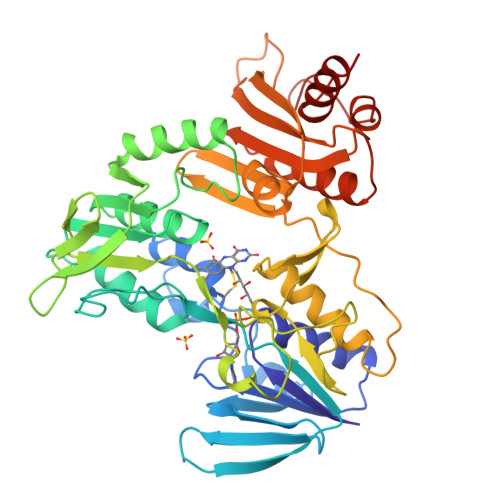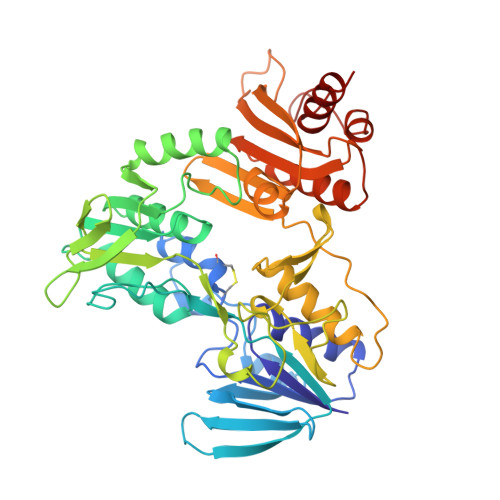An L40C mutation converts the cysteine-sulfenic acid redox center in enterococcal NADH peroxidase to a disulfide.
Miller, H., Mande, S.S., Parsonage, D., Sarfaty, S.H., Hol, W.G., Claiborne, A.(1995) Biochemistry 34: 5180-5190
- PubMed: 7711038
- DOI: https://doi.org/10.1021/bi00015a032
- Primary Citation of Related Structures:
1NHR, 1NHS - PubMed Abstract:
Multiple sequence alignments including the enterococcal NADH peroxidase and NADH oxidase indicate that residues Ser38 and Cys42 align with the two cysteines of the redox-active disulfides found in glutathione reductase (GR), lipoamide dehydrogenase, mercuric reductase, and trypanothione reductase. In order to evaluate those structural determinants involved in the selection of the cysteine-sulfenic acid (Cys-SOH) redox centers found in the two peroxide reductases and the redox-active disulfides present in the GR class of disulfide reductases, NADH peroxidase residues Ser38, Phe39, Leu40, and Ser41 have been individually replaced with Cys. Both the F39C and L40C mutant peroxidases yield active-site disulfides involving the new Cys and the native Cys42; formation of the Cys39-Cys42 disulfide, however, precludes binding of the FAD coenzyme. In contrast, the L40C mutant contains tightly-bound FAD and has been analyzed by both kinetic and spectroscopic approaches. In addition, the L40C and S41C mutant structures have been determined at 2.1 and 2.0 A resolution, respectively, by X-ray crystallography. Formation of the Cys40-Cys42 disulfide bond requires a movement of Cys42-SG to a new position 5.9 A from the flavin-C(4a) position; this is consistent with the inability of the new disulfide to function as a redox center in concert with the flavin. Stereochemical constraints prohibit formation of the Cys41-Cys42 disulfide in the latter mutant.
Organizational Affiliation:
Department of Biochemistry, Wake Forest University Medical Center, Winston-Salem, North Carolina 27157, USA.



















